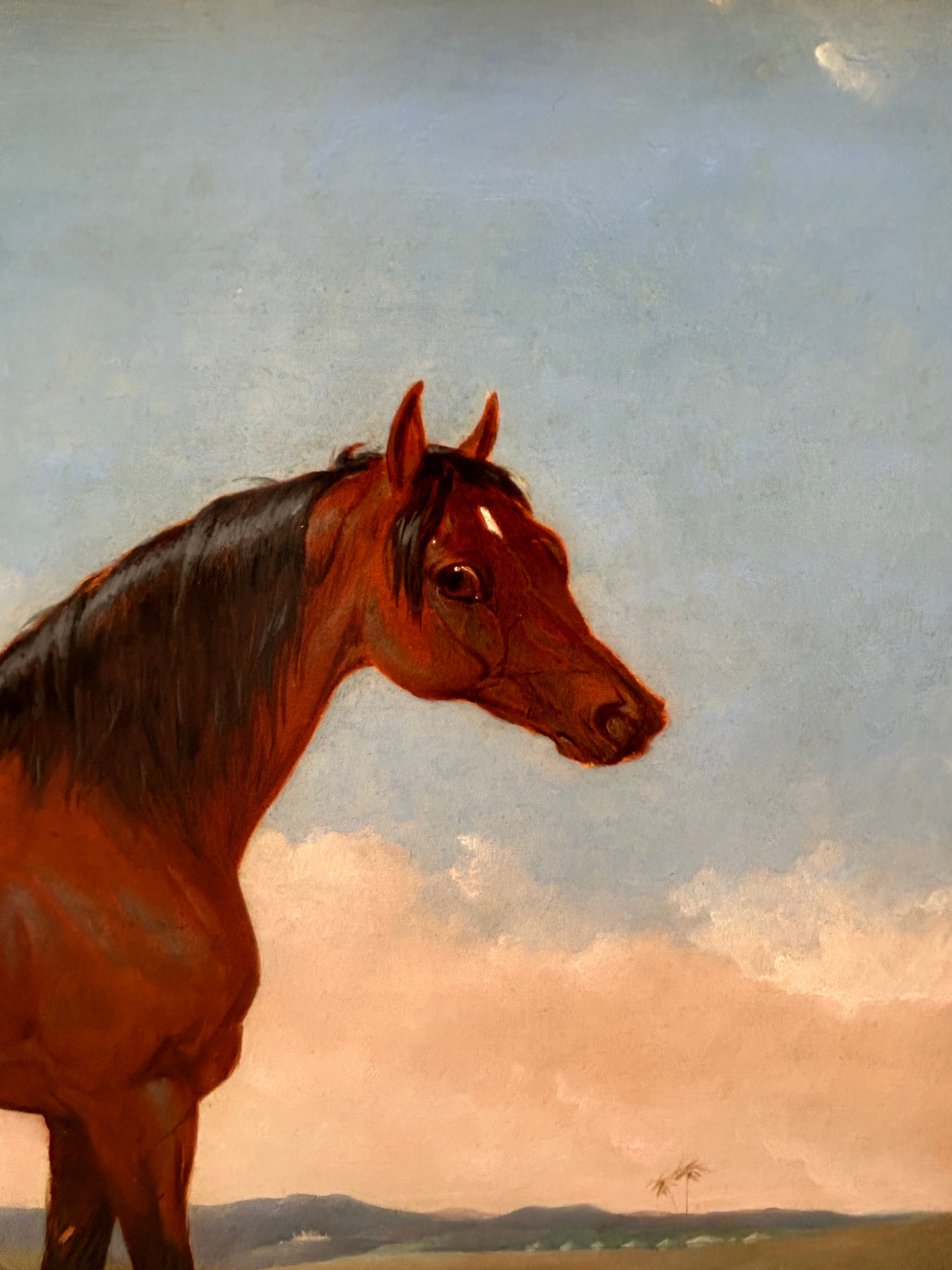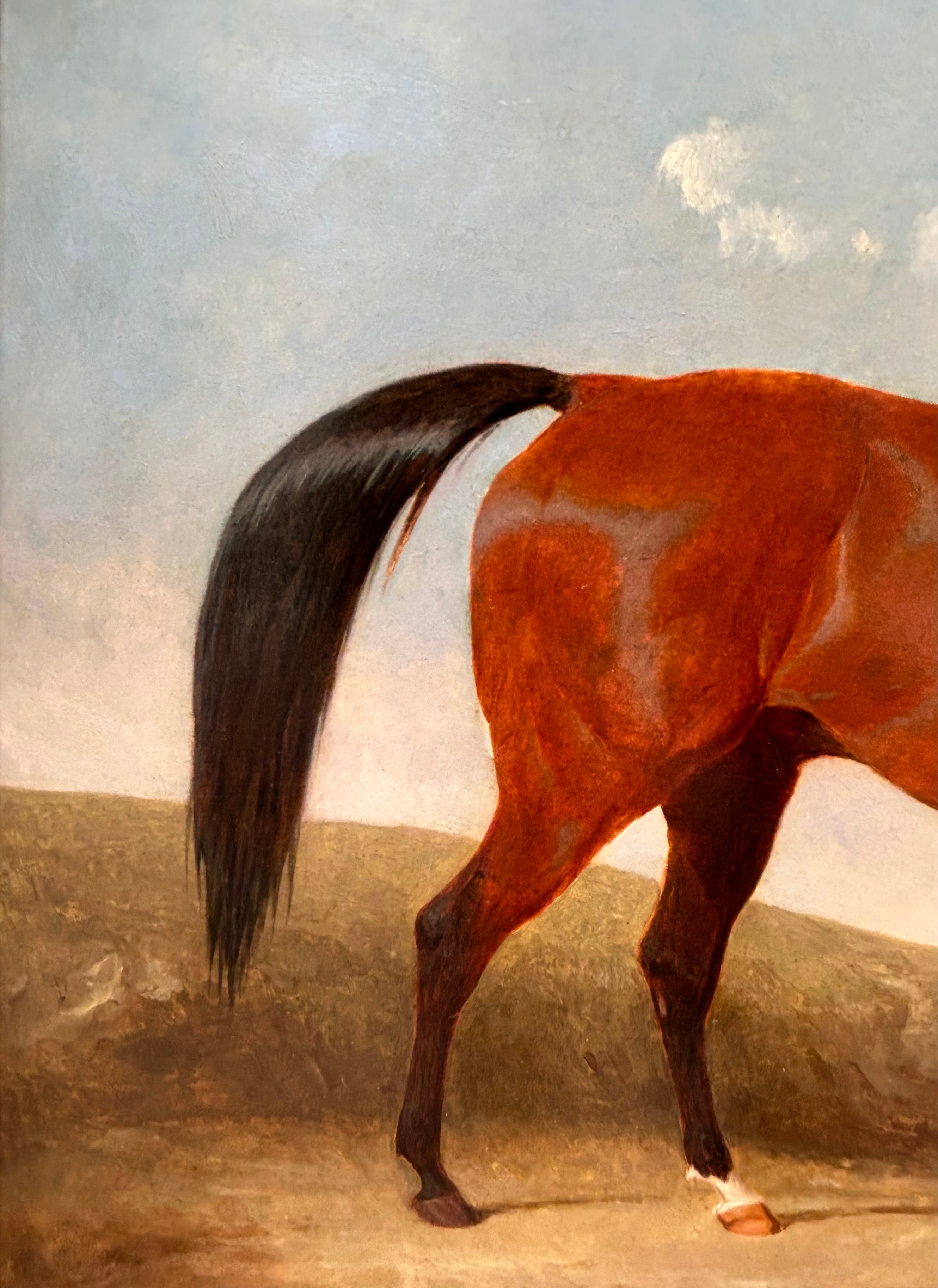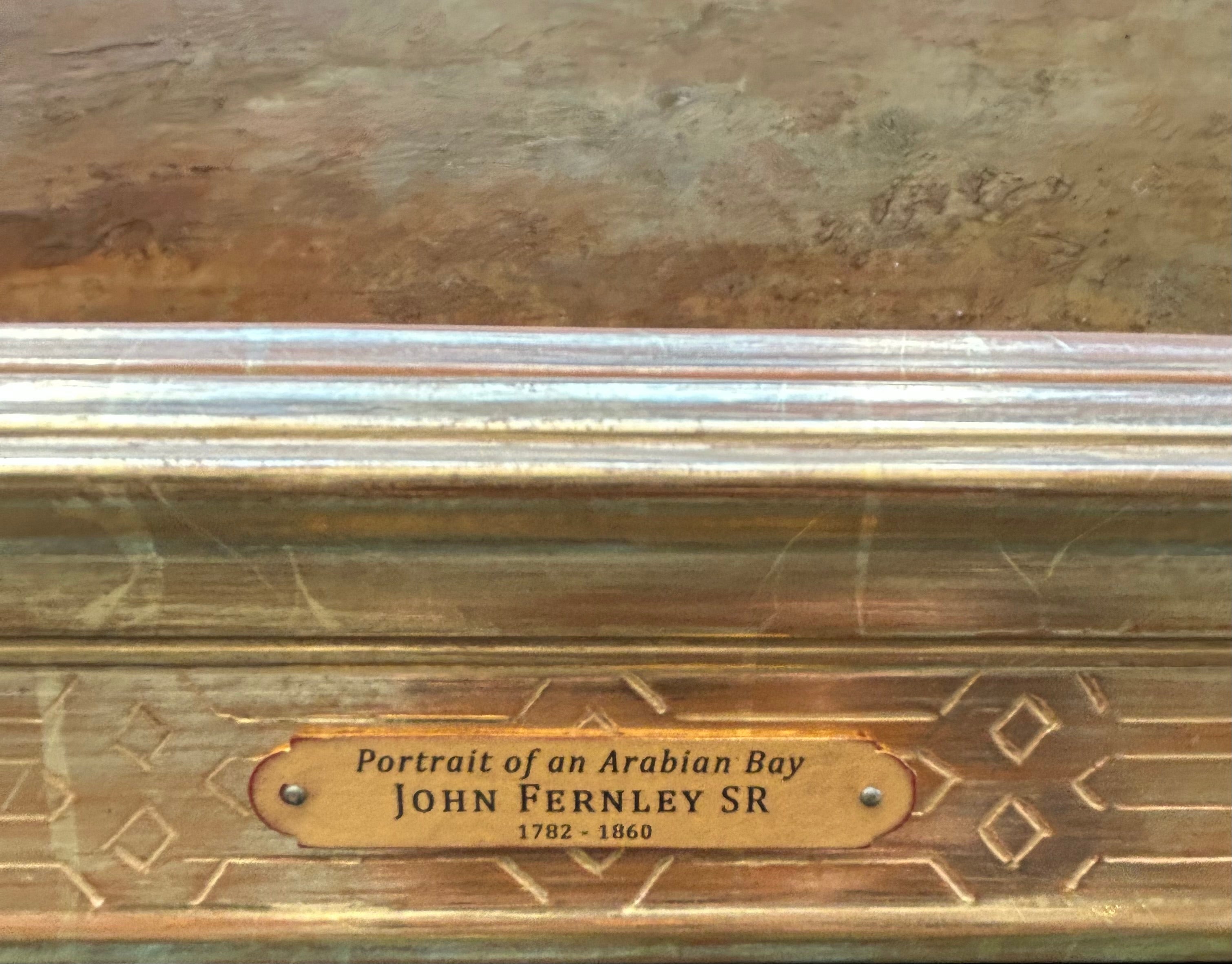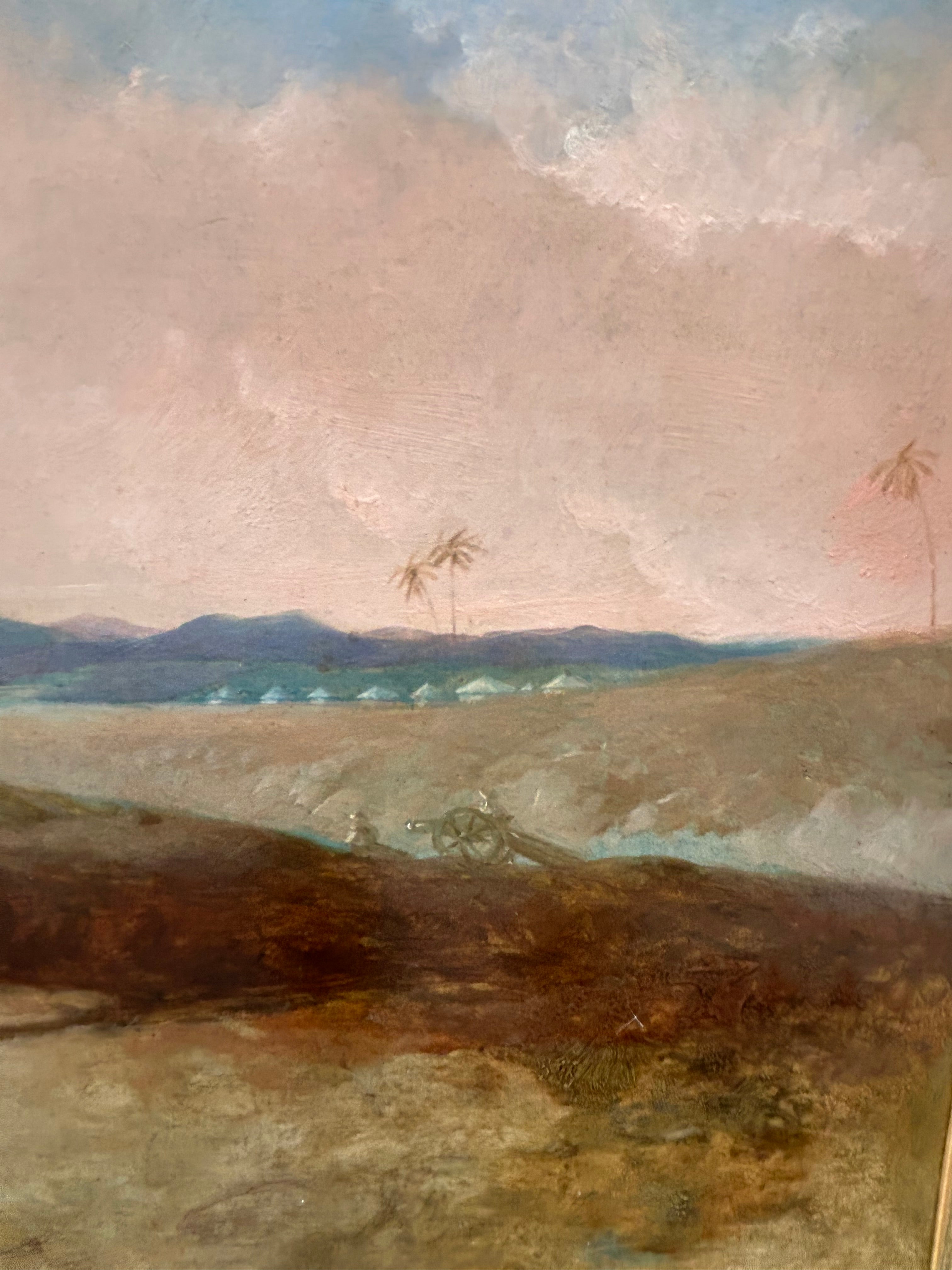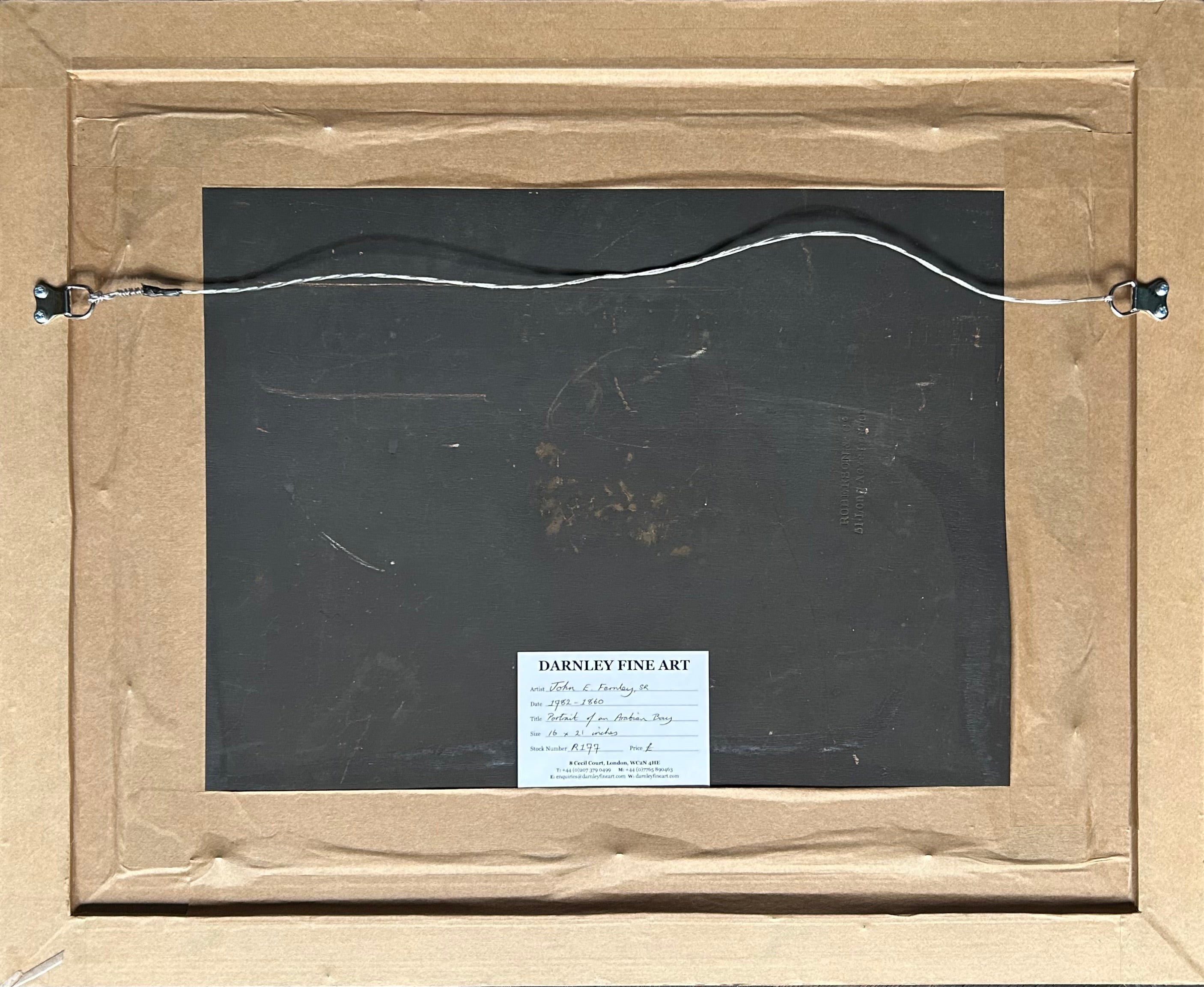
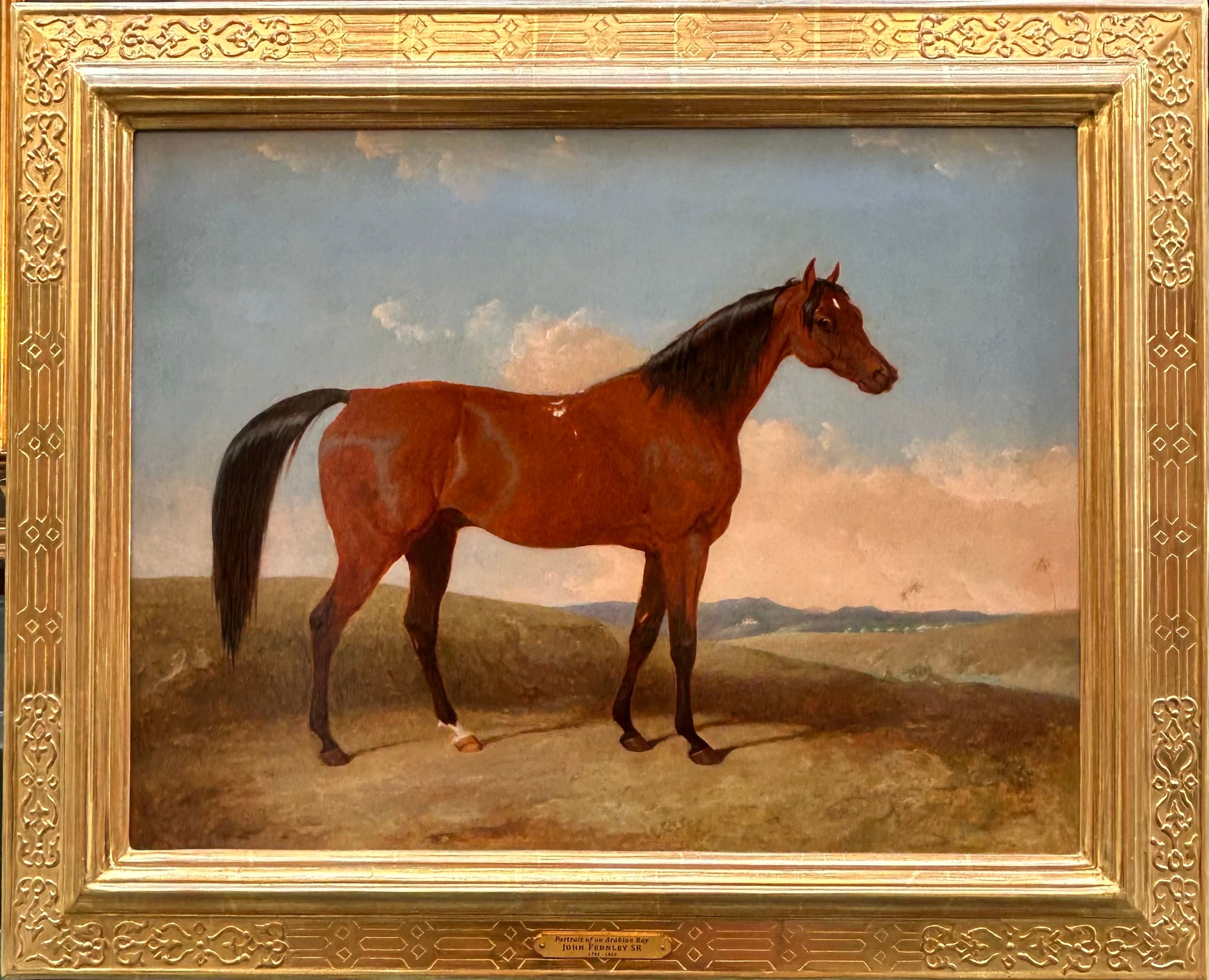
John E Ferneley Sr
Arabian Bay in an Orientalist Landscape
Hand made Orientalist gilt frame
This equine portrait depicts a haughty Arabian horse - identifiable through his raised croup, flared nostrils, and large eyes - within a desert landscape, the natural habitat of the horse breed. In the background of the painting, an encampment and a single field cannon can be seen, indicating a military connection. Fernley is known for having painted horses belonging to cavalry officers, and this painting could indeed belong to one such officer who served in the Middle East and rode a bay Arabian.
Arabian horses were a prized and prestigious breed across Europe by reason of their athleticism, intelligence, and endurance. They were a prized warhorse as far back as the English Crusaders, and had been used as stock for cavalry breeding programmes since the mid 18th century in order to develop lighter and hardier horses for the light cavalry units. With their superiority as warhorses, many monarchs - including Napoleon - favoured them as personal mounts, only accentuating the breed’s prestige.
With the rise of horse sporting in 18 and 19th century England, Arabian horses were also introduced into the breeding stock of racehorses. They form the heritage of the modern Thoroughbred breed, a British breed developed purely for success in racing. Ferneley’s painting tracks this multifaceted history of the Arabian horse in England, and the variety of ventures that they were prized for - from military conflict, to the hobby of racing.
John E. Ferneley, Sr
John E. Ferneley was born in Leicestershire in 1782. He was initially set to become a wheelwright, like his father, but John Manners, 5th Duke of Rutland, encouraged the young man to begin painting. Fernley soon travelled to London and began to train under the tutelage of famed sporting artist Benjamin Marshall, and also joined the Royal Academy School.
Between 1806 and 1823, Ferneley exhibited regularly at the Royal Academy. He spent three years in Ireland at the start of the 19th century before returning back home and settling in Melton Mowbray, where he built his studio. Melton Mowbray was an important place for patronage in this era, as it was the town in which fox-hunting had developed and soon became fashionable. For a sporting and equine artist like Ferneley, a studio in this location allowed him to earn the patronage of riders, hunters, and the local nobility who engaged in sporting activities.
Ferneley’s paintings became exceptionally popular due to their masterful rendering of a fashionable hobby, and he was patronised by many well known figures of his time, including the Count d’Orsay and even members of the Royal Family. He was commissioned to paint ‘scurries’ - panoramic paintings of hunting events - for the prestigious Quorn, Belvoir and Cottesmore hunts. It wasn’t just hunts that Ferneley was commissioned for, but also prominent horse races like St Leger and the Derby. In the hunting off-season, Ferneley would tour the gentry’s estates in England and Ireland and paint commissions for their wealthy owners.

